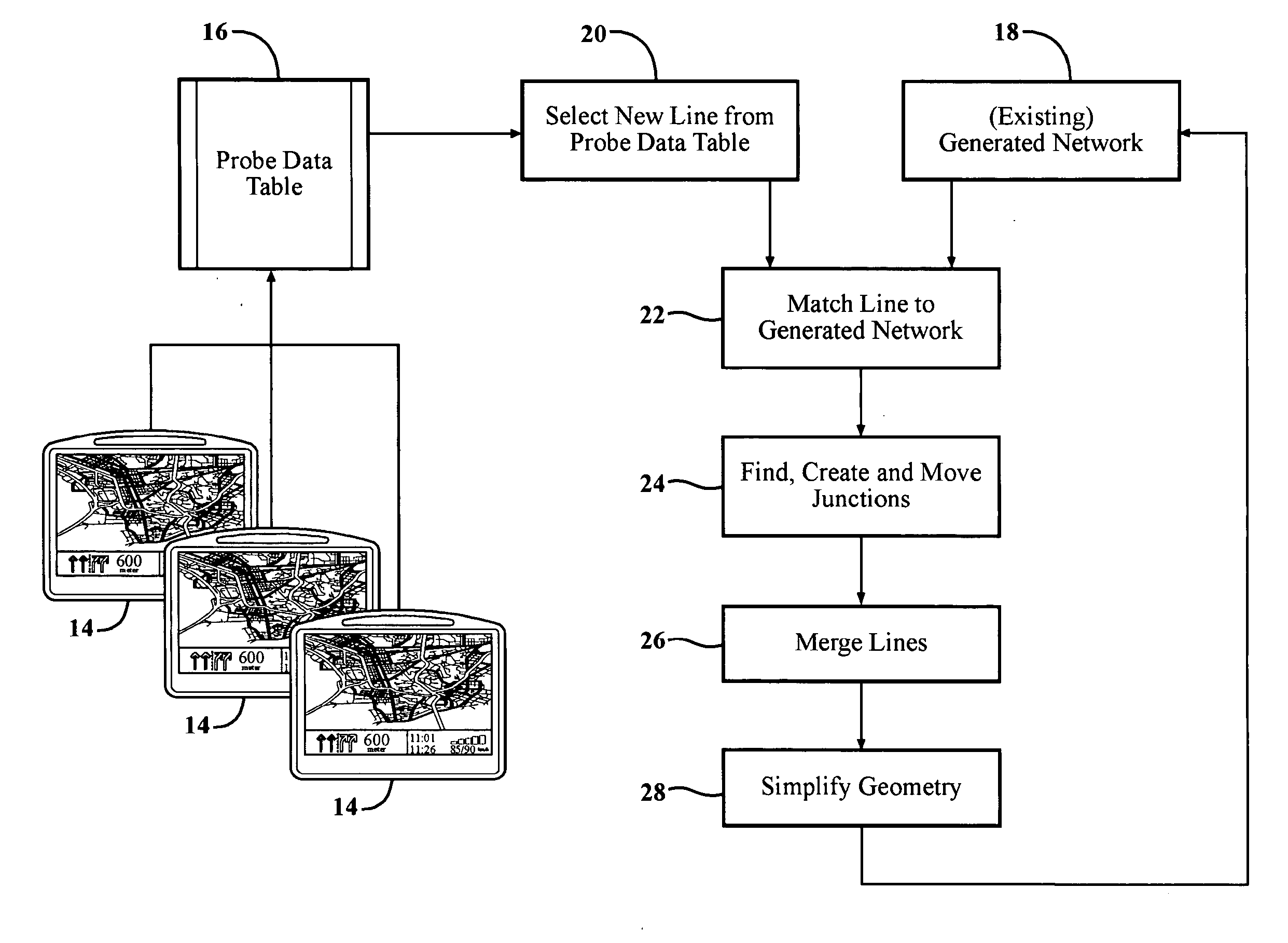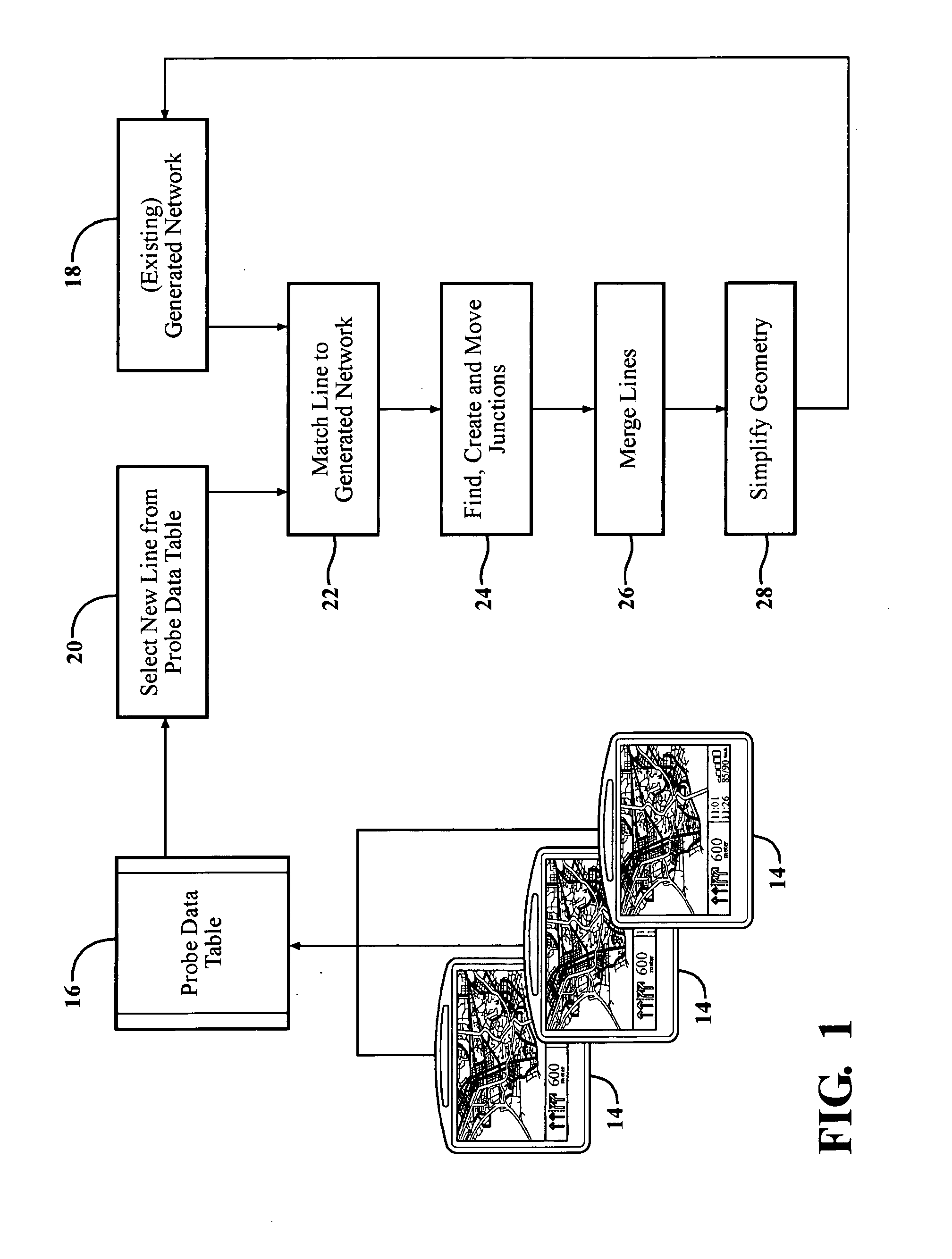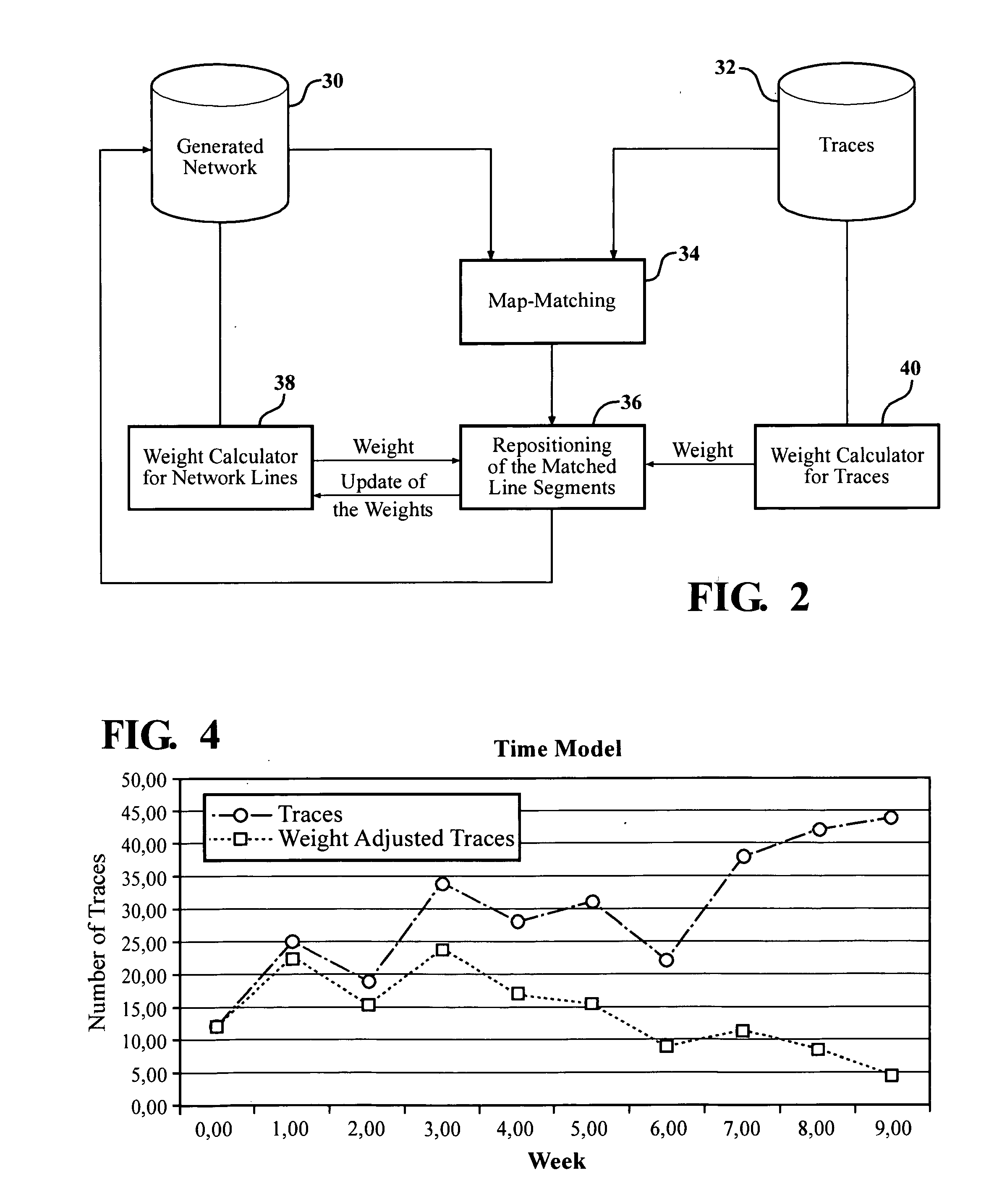Time and/or accuracy dependent weights for network generation in a digital map
a network generation and digital map technology, applied in surveying and navigation, navigation instruments, instruments, etc., can solve the problems of inaccuracy or systematic errors of digital maps, high cost of digital maps to produce and update, and high cost of collecting and processing road information, so as to improve efficiency, accurate detection of branches, and merge
- Summary
- Abstract
- Description
- Claims
- Application Information
AI Technical Summary
Benefits of technology
Problems solved by technology
Method used
Image
Examples
Embodiment Construction
[0043]Nowadays vehicle probe data are used to hold road networks up-to-date. With different approaches it is possible to generate a new network from probe data. One class of algorithms are incremental algorithms. They have several advantages. The incremental approach allows extending and improving a network without to process the whole network again. Such an algorithm is described in the Viae Novae algorithm.
[0044]New data which are available can be easy used to refine and extend the already existing road network. However it is not possible to remove old data from the generated road network. The usage and importance of a road element is described with reference to its weight value. If a road segment is not in use anymore it may have still a high weight. In order to avoid a re-computing of the whole network one can reduce the weight of old data.
[0045]Three different, alternative, time management approaches are introduced below. All three approaches are suitable for the Viae Novae alg...
PUM
 Login to View More
Login to View More Abstract
Description
Claims
Application Information
 Login to View More
Login to View More - R&D
- Intellectual Property
- Life Sciences
- Materials
- Tech Scout
- Unparalleled Data Quality
- Higher Quality Content
- 60% Fewer Hallucinations
Browse by: Latest US Patents, China's latest patents, Technical Efficacy Thesaurus, Application Domain, Technology Topic, Popular Technical Reports.
© 2025 PatSnap. All rights reserved.Legal|Privacy policy|Modern Slavery Act Transparency Statement|Sitemap|About US| Contact US: help@patsnap.com



